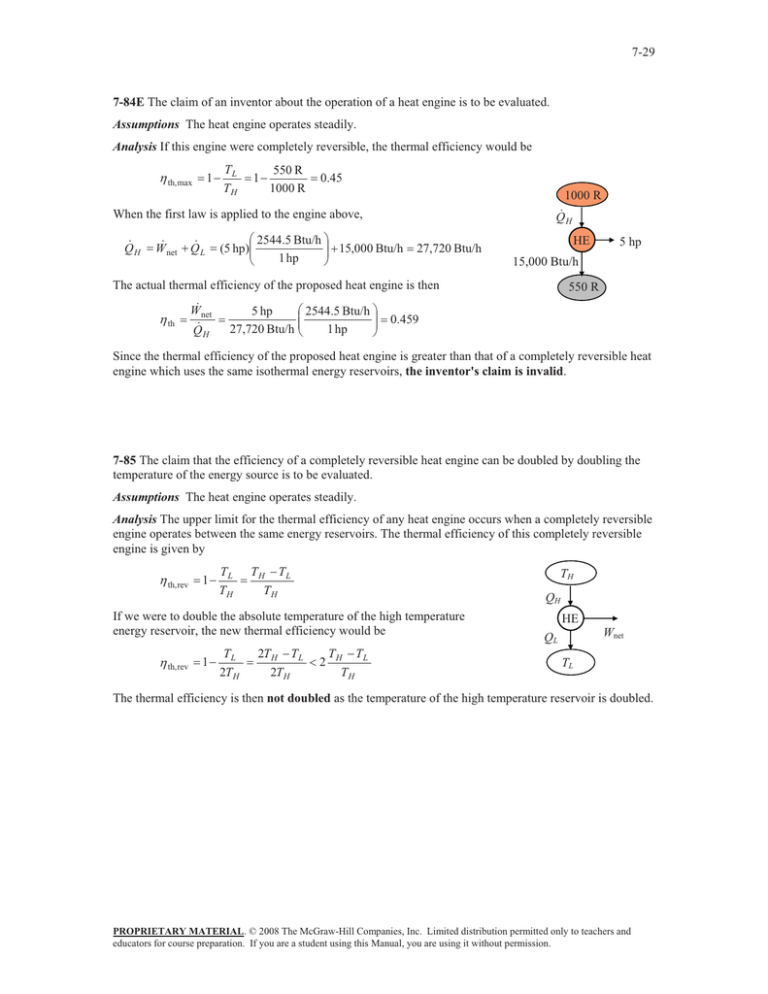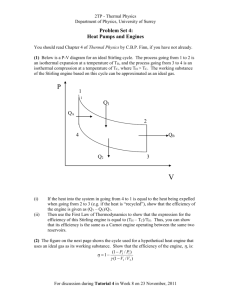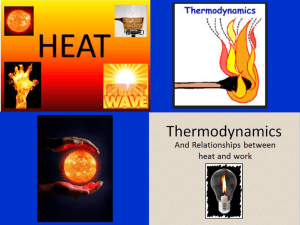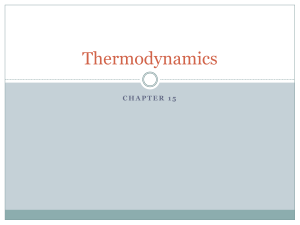7-29 K 1000 R
advertisement

7-29 7-84E The claim of an inventor about the operation of a heat engine is to be evaluated. Assumptions The heat engine operates steadily. Analysis If this engine were completely reversible, the thermal efficiency would be K th, max 1 TL TH 1 550 R 1000 R 0.45 1000 R Q H When the first law is applied to the engine above, Q H W net Q L § 2544.5 Btu/h · ¸¸ 15,000 Btu/h (5 hp)¨¨ 1 hp © ¹ HE 27,720 Btu/h 15,000 Btu/h The actual thermal efficiency of the proposed heat engine is then K th W net Q H § 2544.5 Btu/h · 5 hp ¨ ¸¸ 27,720 Btu/h ¨© 1 hp ¹ 5 hp 550 R 0.459 Since the thermal efficiency of the proposed heat engine is greater than that of a completely reversible heat engine which uses the same isothermal energy reservoirs, the inventor's claim is invalid. 7-85 The claim that the efficiency of a completely reversible heat engine can be doubled by doubling the temperature of the energy source is to be evaluated. Assumptions The heat engine operates steadily. Analysis The upper limit for the thermal efficiency of any heat engine occurs when a completely reversible engine operates between the same energy reservoirs. The thermal efficiency of this completely reversible engine is given by K th, rev 1 TL TH TH TL TH If we were to double the absolute temperature of the high temperature energy reservoir, the new thermal efficiency would be K th,rev 1 TL 2T H T TL 2T H T L 2 H 2T H TH TH QH HE QL Wnet TL The thermal efficiency is then not doubled as the temperature of the high temperature reservoir is doubled. PROPRIETARY MATERIAL. © 2008 The McGraw-Hill Companies, Inc. Limited distribution permitted only to teachers and educators for course preparation. If you are a student using this Manual, you are using it without permission.







